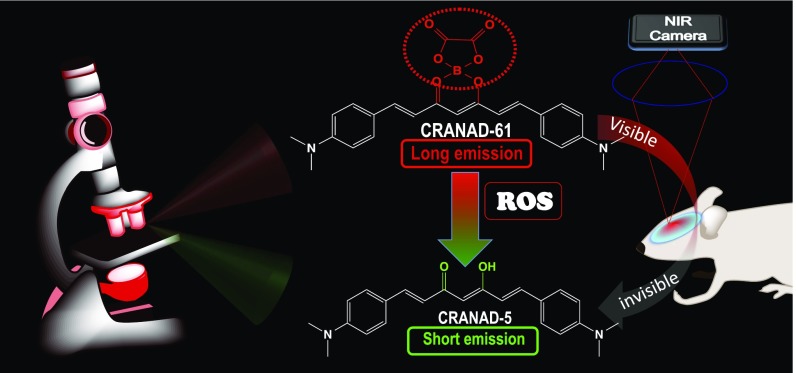Fig. 1.
Our design strategy for ROS-sensitive imaging probes. The designed probe CRANAD-61, on reaction with ROS, produces a significant Em wavelength shift, which can be used for identifying active plaques and CAAs via dual-color two-photon microscopic imaging. The shifting can also lead to a visible to invisible transformation in an NIR window (640–900 nm), as CRANAD-5, the product of the ROS reaction, is invisible with an NIR camera. This transformation could be harnessed for a whole-brain NIRF imaging to quantify the total relative ROS concentrations in AD brains.

